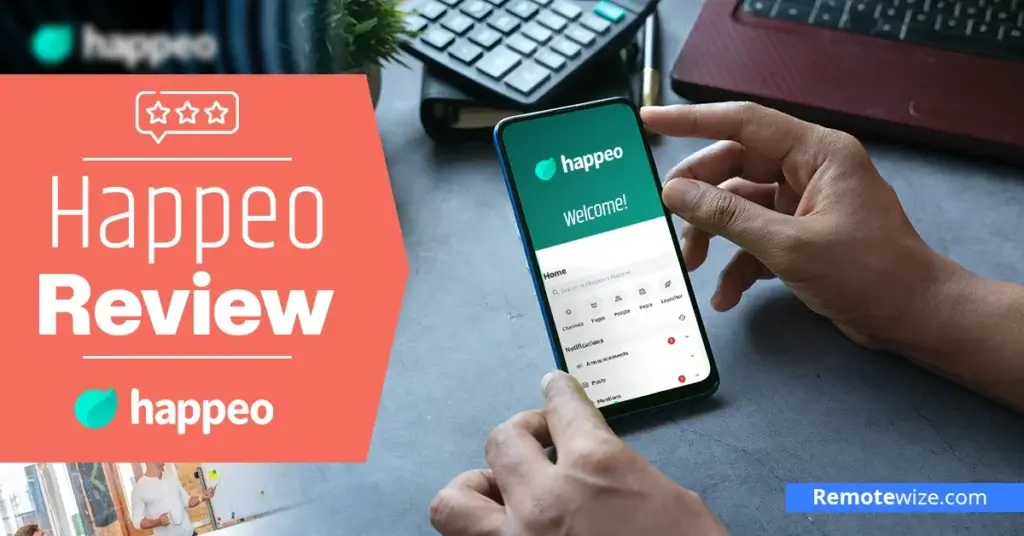Effective internal communication is key to success in modern organizations, and Happeo is designed to facilitate it. As a digital workplace platform, it enables users to streamline collaboration, knowledge sharing, and connectivity.
In this Happeo review, I will explore how it combines intranet functionality with social networking tools to create a central hub for teams to stay informed and aligned.
With features like customizable pages, real-time channels, and Google Workspace integrations, Happeo aims to enhance productivity and simplify workflows. It’s especially suited for businesses with remote or hybrid teams looking to improve communication and collaboration across the board. Keep reading to see if Happeo is the right fit for your team.
Key Takeaways: Happeo Overview
- Organized Communication with Channels: Happeo Channels lets teams collaborate around specific topics, departments, or projects. You can post updates, share files, and comment in real-time. This keeps all conversations organized and easy to follow.
- Powerful Intranet with Pages: Happeo’s Pages function offers a structured way to manage internal knowledge. You can build branded, easy-to-navigate spaces for onboarding, policies, or documentation, helping reduce information silos and improve productivity.
- AI-powered search: Happeo’s Google-powered search lets you find messages, files, and people instantly. You can even use it across Gmail, Drive, and Calendar. This, in turn, saves time and cuts down on redundant questions and file-hunting.
How I Tested Happeo
To provide a practical and realistic assessment in this Happeo review, I set up a simulated digital workplace that mirrored the structure and workflows of a typical midsize company. This involved creating intranet pages for different departments, setting up Channels for project-specific collaboration, and uploading internal documents to evaluate knowledge organization and access.
I tested Happeo on desktop via Google Chrome browser and on mobile platforms via Android device. Over the course of a week, I explored how well the platform supported centralized content management, internal search capabilities, and team collaboration. I also evaluated its integration with Google Workspace apps like Drive, Calendar, and Gmail.
My focus was on usability, navigation flow, content discoverability, and how scalable Happeo is when expanding to larger teams and growing libraries of internal resources. This hands-on approach allowed me to assess whether Happeo can serve as a reliable knowledge hub and collaborative workspace for modern, distributed teams.
Happeo Pricing
Happeo doesn’t display its pricing publicly but uses a quote-based pricing model. While this approach allows for tailored solutions, it may feel less transparent for more budget-conscious users. It also does not offer a free plan. However, they provide a 14-day free trial, allowing organizations to explore the platform’s features before committing. start your free trial here.
The platform has three pricing plans:
- Starter: Ideal for small businesses with fewer than 100 users. This plan includes essential features like Pages, Channels, Google Workspace integration, and a mobile app. It offers both monthly and annual billing options.
- Growth: Designed for medium-sized companies. On top of what the Starter package offers, you get advanced analytics, scheduled posts, polls, ghostwriting, and lifecycle management. It requires a minimum of 75 users and is billed annually.
- Enterprise: Tailored for large organizations, this tier includes all Growth features plus federated search, API access, and custom widgets. It requires a minimum of 75 users and is billed annually.
Happeo Compatibility and User-friendliness
Happeo is accessible via web browsers and offers native mobile applications for both iOS and Android devices. While there isn’t a dedicated desktop application, users can access the platform through web browsers on internet-enabled desktop systems.
Signing up for the free trial was child’s play. I only needed to click “start free trial” on the home page, and select either Google or Microsoft sign-up option. I chose the former for this review, and followed along with the four-step signup wizard to create my account.
While the signup process was smooth, it could have been better. As it stands, Happeo’s sign-up process makes it easier for people who already use Google and Microsoft. However, it doesn’t offer the standard email sign-up, locking out users who don’t use Google or Microsoft services.
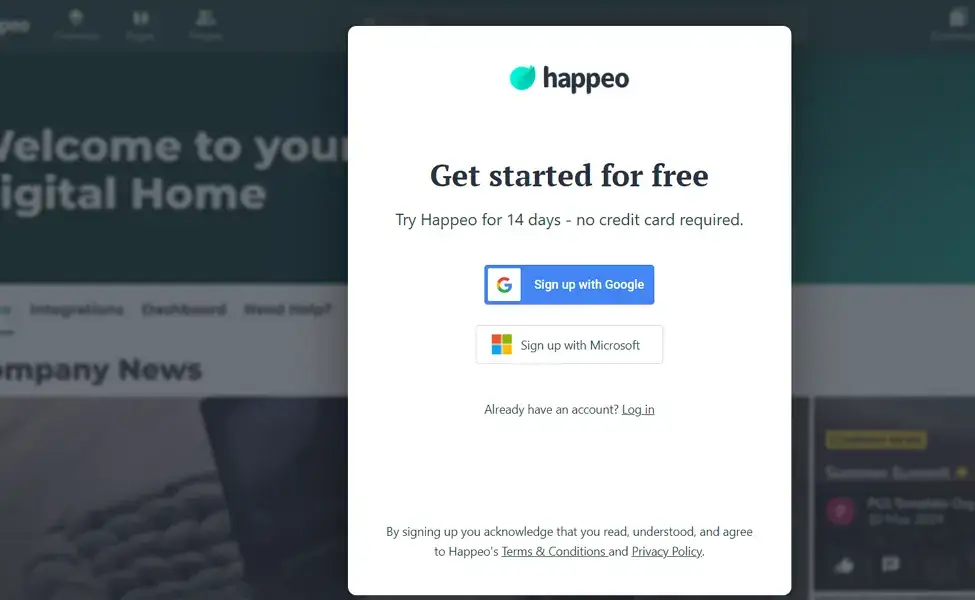
Once I created an account, setting up the basics was a breeze. I found it incredibly easy to invite team members, create channels, add pages, and adjust other vital settings. What stood out to me was the customizability of Happeo’s homepage to make it my own.
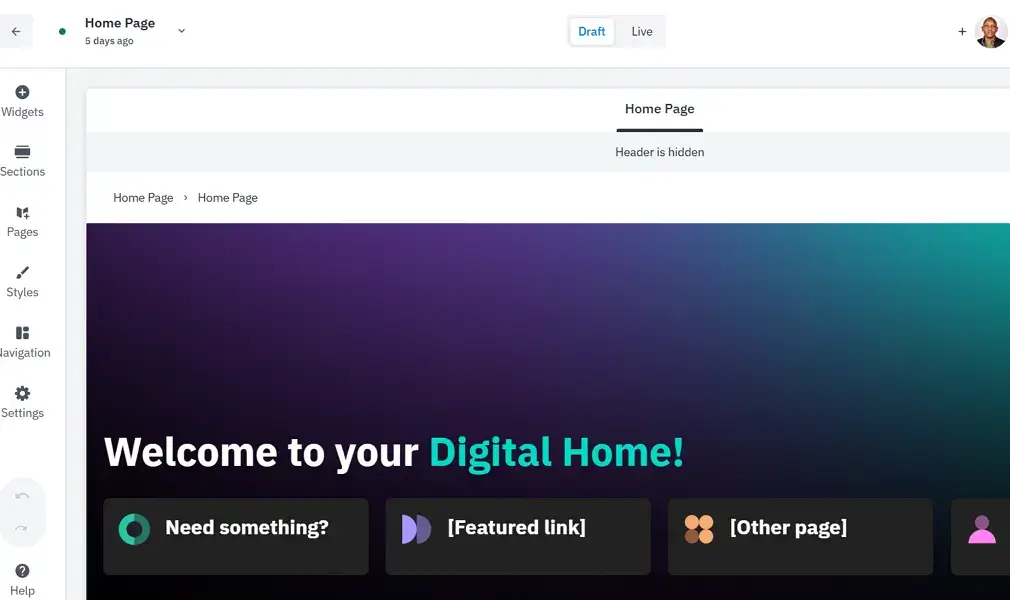
I tested Happeo on my Android smartphone and I got almost a similar experience to the web app. I really liked the intuitive and clutter-free interface, which ensures all key features are within reach to simplify navigation.
Employees can quickly locate Channels, Pages, People, or Posts with a few clicks. Moreover, important notifications are displayed below the menu to ensure you never miss anything that matters.

Core Functionalities: Strengths, Weaknesses, and Use Cases
Happeo functions as a full-fledged digital workplace that supports content management, collaboration, and employee engagement. In the following sections, we will break down its core features, how they work, where they shine, and where they fall short. Keep reading to learn about Happeo strengths and weaknesses.
1. Pages
Happeo’s Pages are the backbone of its intranet functionality. They enable organizations to create structured, visually appealing spaces for sharing company information, onboarding resources, policies, and team updates. These pages are fully customizable and support embedded multimedia, widgets, and app integrations.
The platform has a drag-and-drop editor that admins and content creators can use to create pages. I particularly enjoyed the way I can organize the pages into different categories or departments to offer a centralized and searchable knowledge base.
However, while the design editor is user-friendly, it lacks the granular permission controls some enterprise platforms offer. Also, customization beyond the provided layout options can feel limited compared to platforms like SharePoint.
How to create a Happeo Page
- Go to the Pages section from the main navigation menu
- Click on “Create a Page” or the “+” icon to start a new page. You can create a page from scratch or select from the given templates
- Enter a title. Select the team or department where it will live
- Use the drag-and-drop editor to add sections and widgets
- Customize the layout using Happeo’s column-based grid. You can resize and rearrange elements to suit your content structure
- Set page permissions, controlling who can view or edit the page within your organization
- Click “Publish” to make the page live, or save it as a draft if you want to continue editing late
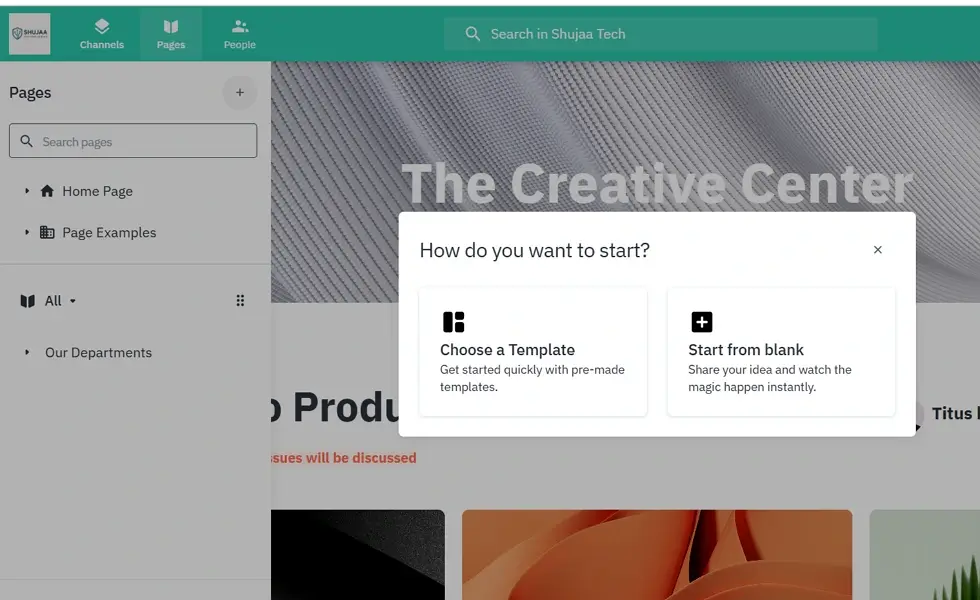
Happeo offers a role-based permission system that gives administrators control over who can view, edit, or manage content across Pages, Channels, and Spaces.
Pages usually have permissions set at the Space level (a Space is like a department or team). You can also set permissions at the page level. There are three permission levels:
- Viewers: These users can read content but can’t make any changes. This is ideal for company-wide announcements or HR policies that need to remain untouched.
- Editors: Users with editing rights can update text, add widgets, embed media, and reorganize content on the page.
- Admins: These users have full control over the page and Space, including adding/removing members, setting permissions for others, and publishing or unpublishing pages.
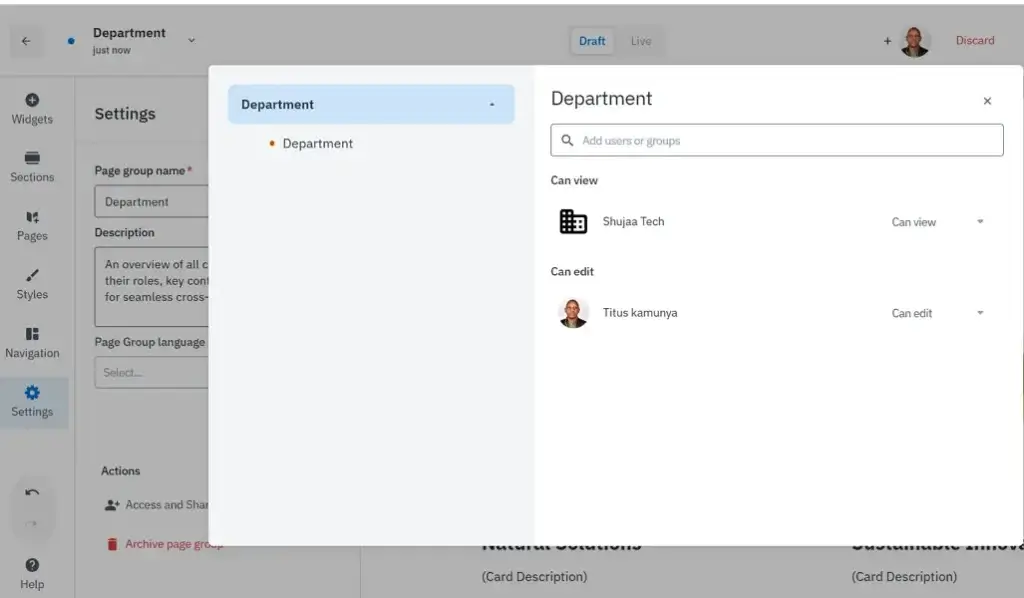
2. Happeo Channels
Channels in Happeo serve as hubs for team communication, updates, and informal collaboration. Think of them as regular message boards combined with social intranet threads. They are designed to reduce internal email clutter and encourage discussions across teams or departments.
Posts are displayed in a social feed format, with threaded replies and reactions for engagement. Notifications and user tagging ensure important messages are seen without being intrusive. Channels are well-suited for replacing all-staff emails, sharing announcements, engaging remote teams, or promoting knowledge exchange across departments.
How to create Channels in Happeo:
- Navigate to the Channels section from the left-hand menu
- Click the “+ Create Channel” button
- Enter the Channel name and a short description (optional but helpful for clarity).
- Click “Create” to launch the Channel.
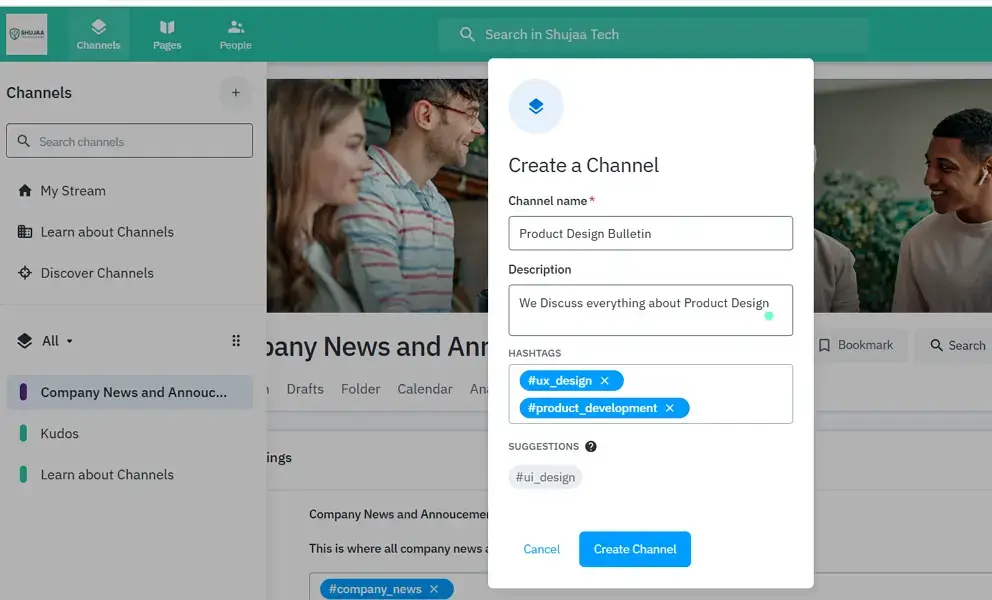
How to customize Happeo Channels
Once the channel is created, you can go to the Members section to add new members. You can also go to Settings to change things like colors, header images, or even manage members. I particularly loved how I could control who could join my channels.
The channels can be:
- Secret: Only invited users can join
- Private: Team members in my organization can request to join
- Public: Anyone in my organization can join
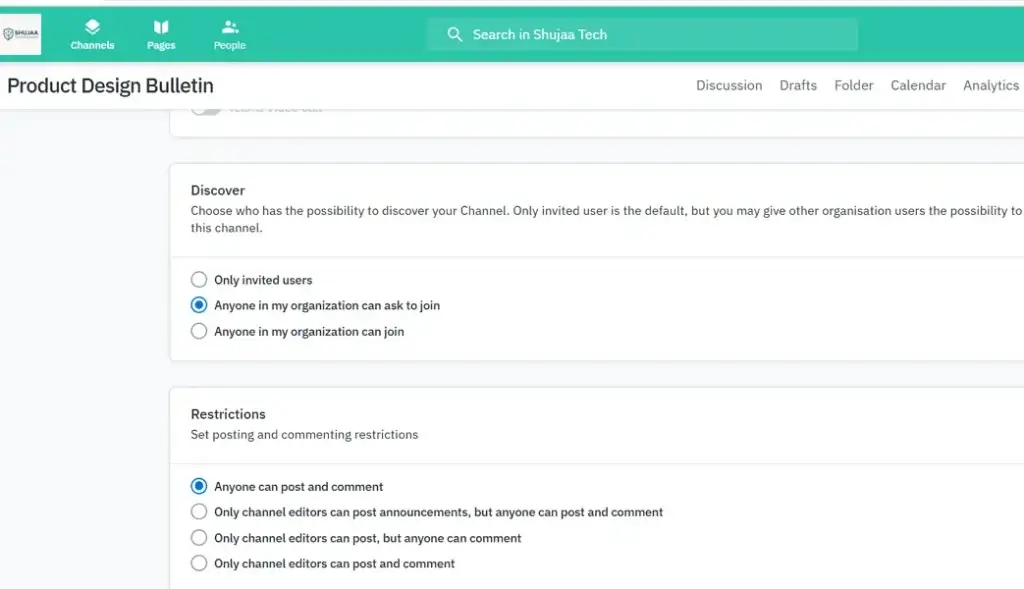
3. Messaging
All the messages in Happeo happen within the channels. Each post in a Happeo Channel supports threaded comments, allowing users to respond directly to updates or questions. Comments can include text, emojis, mentions (using @), and attachments like images or files. This structure encourages contextual discussions without clogging up the main feed.
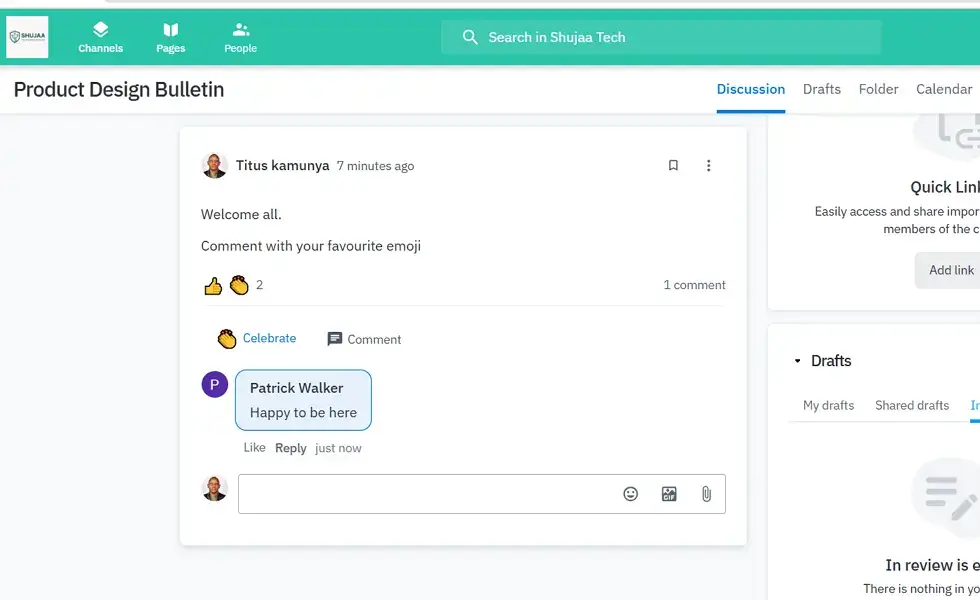
Admins or Channel owners can control who is allowed to post and comment:
- Channels can be set to read-only, meaning only designated users like managers can post, while others can only react or comment.
- In stricter settings, comments can also be disabled entirely. This is useful for one-way announcements.
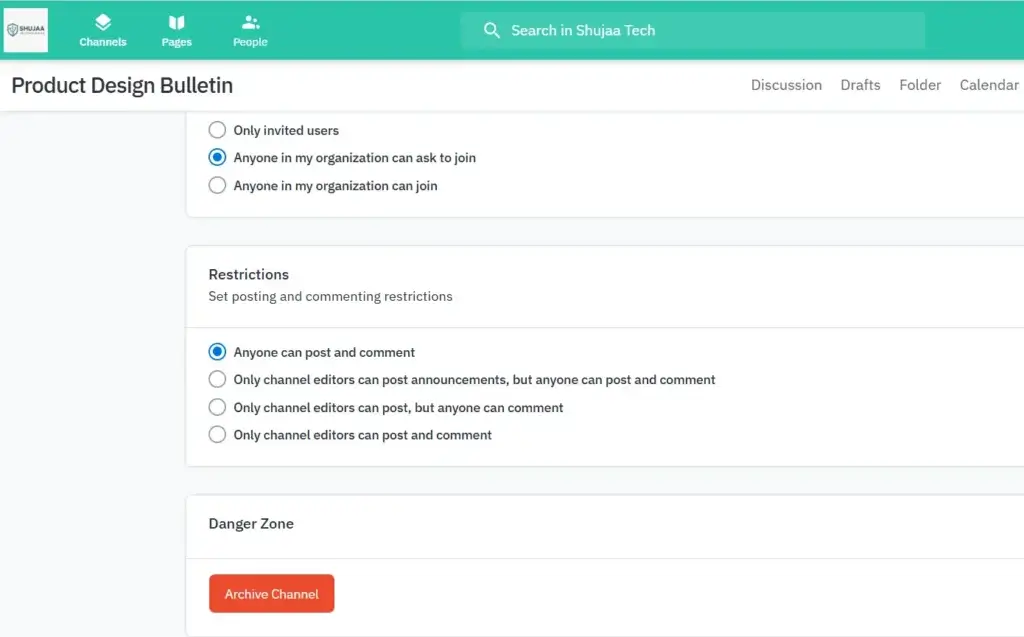
Additionally, Happeo allows content moderation through post-deletion and reporting features, helping maintain a professional and safe communication environment. However, there’s no advanced content approval workflow, which might be limiting for organizations needing strict pre-publication control.
Additionally, Happeo doesn’t support direct messages. However, its integration with Microsoft allows you to send DMs via Microsoft Teams Chat or through email.
4. Search
Happeo Search lets users search for content from many sources, like Happeo Pages, Channels, and other apps like Google Drive, Gmail, Calendar, and Microsoft 365 apps. That said, the platform can retrieve the information you need from the search bar.
Search results are organized by source, with filters to narrow by date, type, or relevance. This makes finding information fast and intuitive, even across large, distributed teams. This means employees no longer have to dig through folders, email threads, or multiple platforms to find a policy document, or announcement. It’s especially useful for onboarding, compliance audits, or internal knowledge lookups.
However, the quality of searches will depend on permissions and integration quality. For example, users might not be able to locate certain documents if Google Drive or Microsoft aren’t properly integrated.
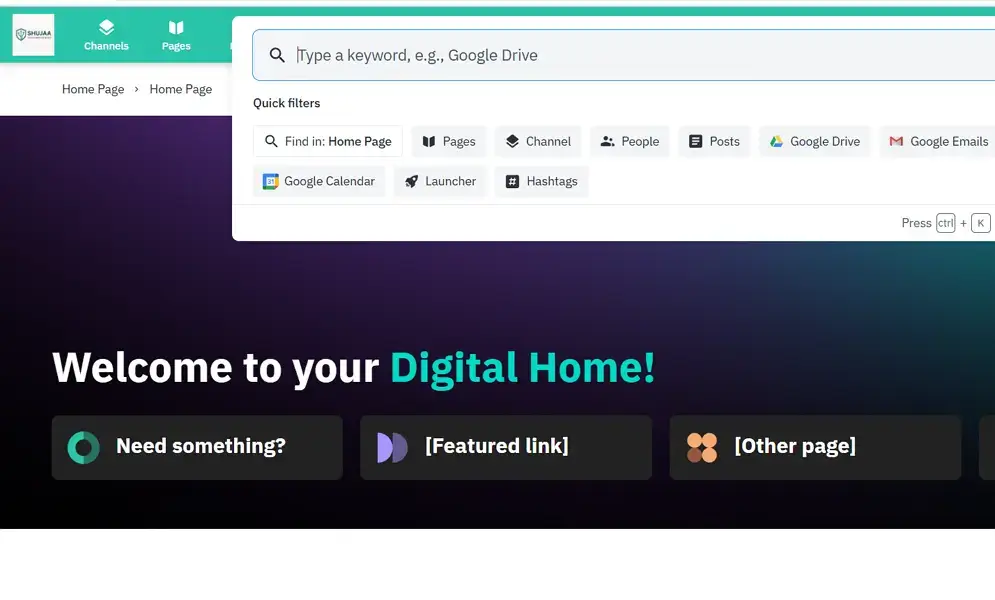
5. Analytics
Happeo has a built-in analytics dashboard that provides visibility into user engagement, content performance, and adoption trends across your digital workplace.
Admins and content creators can access detailed insights on:
- Page views and time spent per page
- Channel activity and message volume
- User engagement metrics (likes, comments, shares)
Happeo Analytics helps internal comms, HR, and operations teams understand which content resonates, what is being ignored, and how employees interact with information. This is crucial for improving internal communication strategies, refining content relevance, and driving user adoption in large organizations.
Even though it is easy to tell the nature of posts that attract the most engagement, the analytics feature lacks advanced customization. As of this writing, Happeo users are unable to create custom reports or export detailed datasets for external tools like Power BI or Tableau.
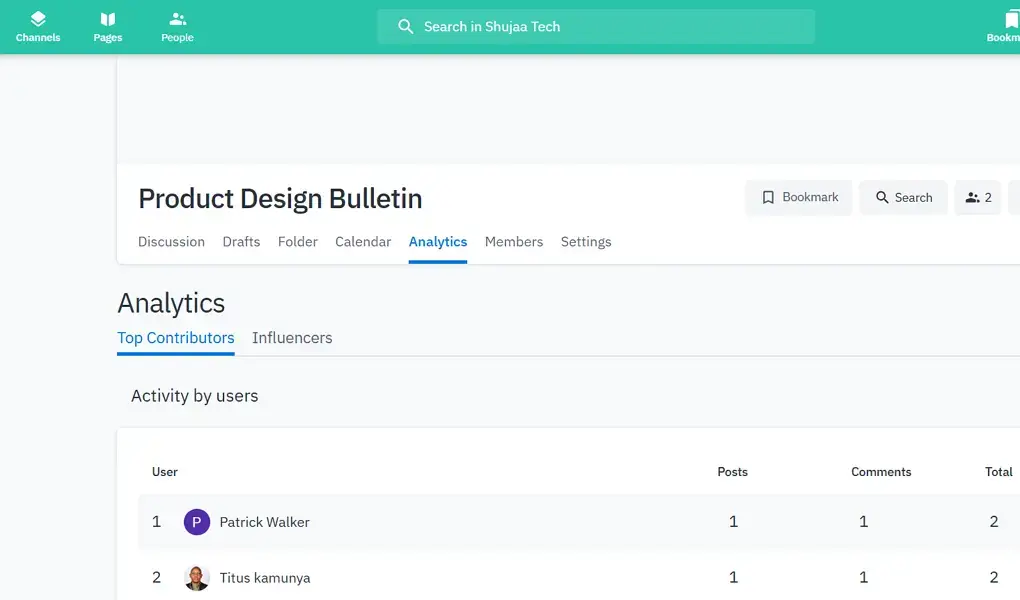
6. Integrations
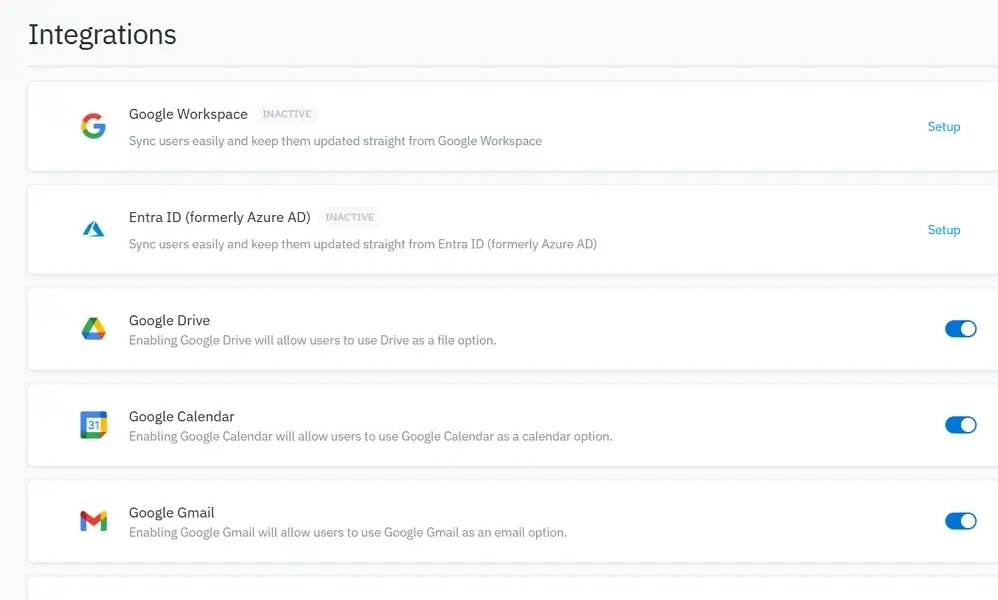
Happeo has a set of tools to make your digital workplace more centralized. These tools connect to important tools like Google Workspace, Microsoft 365, and other apps.
Administrators can manage integrations through the Admin Settings panel. Available integrations include:
- Productivity Suites: Google Workspace (Gmail, Drive, Calendar, Chat) and Microsoft 365 (Outlook, OneDrive, SharePoint, Teams).
- Identity Management: Microsoft Entra ID for user provisioning and single sign-on (SSO).
- Communication Tools: Slack and Microsoft Teams for direct messaging and calls within Happeo.
- Content Management: AODocs for document management and embedding views into Happeo pages.
Users can enable these integrations by configuring them in the Admin Settings. Some may require additional authorization steps, such as granting permissions in Microsoft Entra ID or Google Workspace.
Meanwhile, while Happeo offers a range of integrations, they primarily focus on Google and Microsoft ecosystems. This means organizations using alternative tools may find limited integration options. Additionally, setting up certain integrations like Google Workspace and Slack can be complex, requiring administrative privileges and multiple configuration steps.
7. Customer Support
Happeo offers multi-channel support, accommodating inquiries through email, phone, and WhatsApp. The platform also has a comprehensive Help Center and onboarding support for higher-tier customers.
Users can reach out via:
- Email for formal queries and technical issues.
- Phone and WhatsApp for direct, real-time communication.
- The Help Center provides articles, FAQs, and admin guides for self-service troubleshooting.
I tried the WhatsApp option, and I got a reply in under two minutes.

What Are the Best Happeo Alternatives?
Happeo is great at combining intranet and collaboration features with Google Workspace integrations. However, it is not an end-all, be-all solution for every organization. After all, each team has specific design needs and budget limits. If you’re looking for a platform with different strengths, here are the best Happeo alternatives to consider.
Simpplr
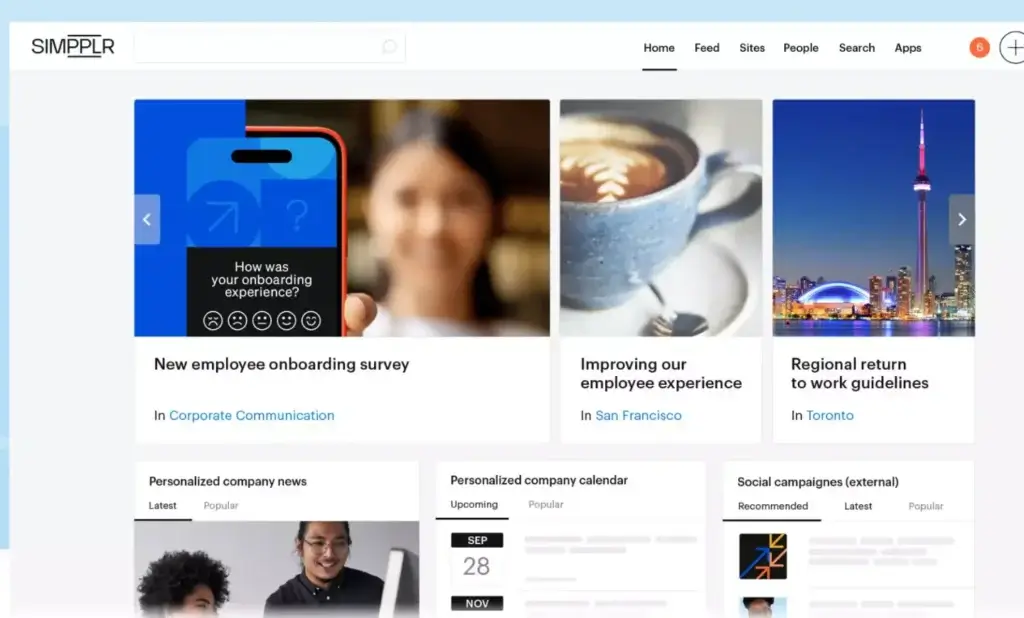
Simpplr is a user-friendly intranet platform built around employee engagement and internal communications. It’s particularly appealing for larger enterprises seeking a polished UI and advanced personalization features.
Unlike Happeo, Simpplr is more focused on creating a company-branded experience with deep analytics on employee engagement, making it a good alternative for organizations that prioritize employee engagement and internal branding.
Furthermore, its AI-powered content curation ensures employees get relevant updates without information overload. It also offers advanced personalization and analytics to track how well communications are landing. Lastly, its broader integration options make it suit companies using diverse tech stacks.
Just like Happeo, Simpplr does not publicly list pricing.
LumApps
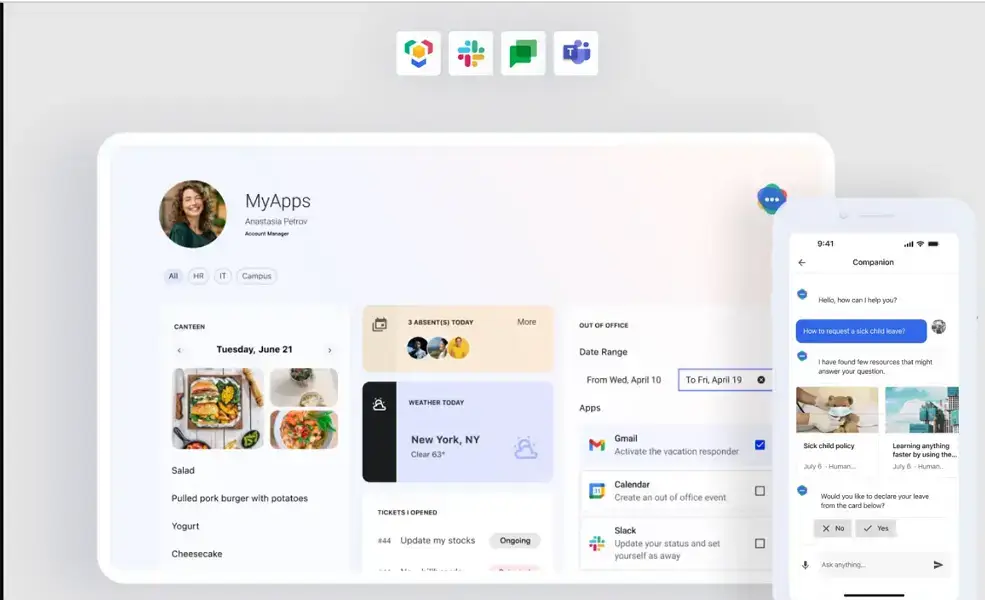
LumApps is a powerful digital workplace platform designed for enterprise communication and knowledge sharing. It integrates deeply with both Google Workspace and Microsoft 365, giving it broader platform compatibility.
LumApps stands out as a strong Happeo alternative due to its native multilingual support, personalized news feeds, and targeted content delivery. It also offers stronger employee lifecycle communication tools like onboarding journeys, making it well-suited for HR-driven internal comms strategies.
Just like Happeo, LumApps’ pricing is not publicly available. However, you can always request a demo and pricing information.
Interact
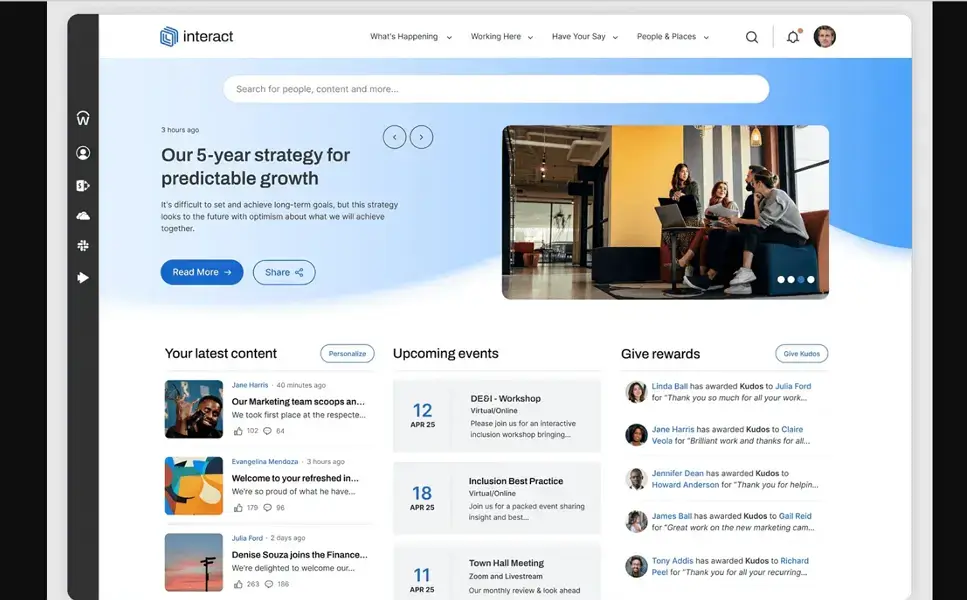
Interact is an internal communications tool with a strong emphasis on personalization, social features, and analytics. It includes rich employee directory tools, survey capabilities, and automated content targeting.
Interact is a strong Happeo alternative for organizations that prioritize governance, compliance, and structured internal communication. Its powerful content targeting, social features, and employee directories make it ideal for highly regulated industries. While Happeo leans modern and Google-first, Interact caters well to traditional enterprise intranet needs.
Just like Happeo, Interact offers custom pricing based on organization size.
Conclusion: Is Happeo a Perfect Fit For Your Business?
Happeo is a thoughtfully designed digital workplace platform. It excels at unifying internal communications, content sharing, and collaboration. Its main strengths are its easy-to-use intranet page builder, straightforward Google Workspace and Microsoft 365 integrations, and basic analytics that show how people use the platform. The Channels feature also allows for structured, team-based conversations, making collaboration smoother and more efficient.
That said, Happeo has a few limitations. The lack of a free plan makes it less accessible to small teams or startups with limited budgets. Additionally, the requirement to sign up using Google or Microsoft accounts may exclude teams using other systems. Moreover, setting up certain integrations can also be a bit complex, requiring admin-level access and additional configuration steps.
Lastly, Happeo’s robust feature set and ease of use make it a strong choice for medium-to-large businesses, especially those already operating within the Google Workspace or Microsoft ecosystems. In addition, their pricing is quote-based, enabling users to get plans tailored to their unique requirements.
All things considered, if your organization prioritizes centralized knowledge sharing, employee engagement, and secure internal communication, Happeo could be a smart investment.
FAQs: Happeo Review
How much does Happeo cost?
Happeo offers custom plans based on the size and needs of your organization. You will need to contact their sales team for an exact quote.
Does Happeo offer a free plan?
No. However, it offers a 14-day free trial that does not require a credit card.
Does Happeo integrate with Google Drive?
Yes. Happeo natively integrates with Google Drive. You can also integrate with third-party apps like Slack.

